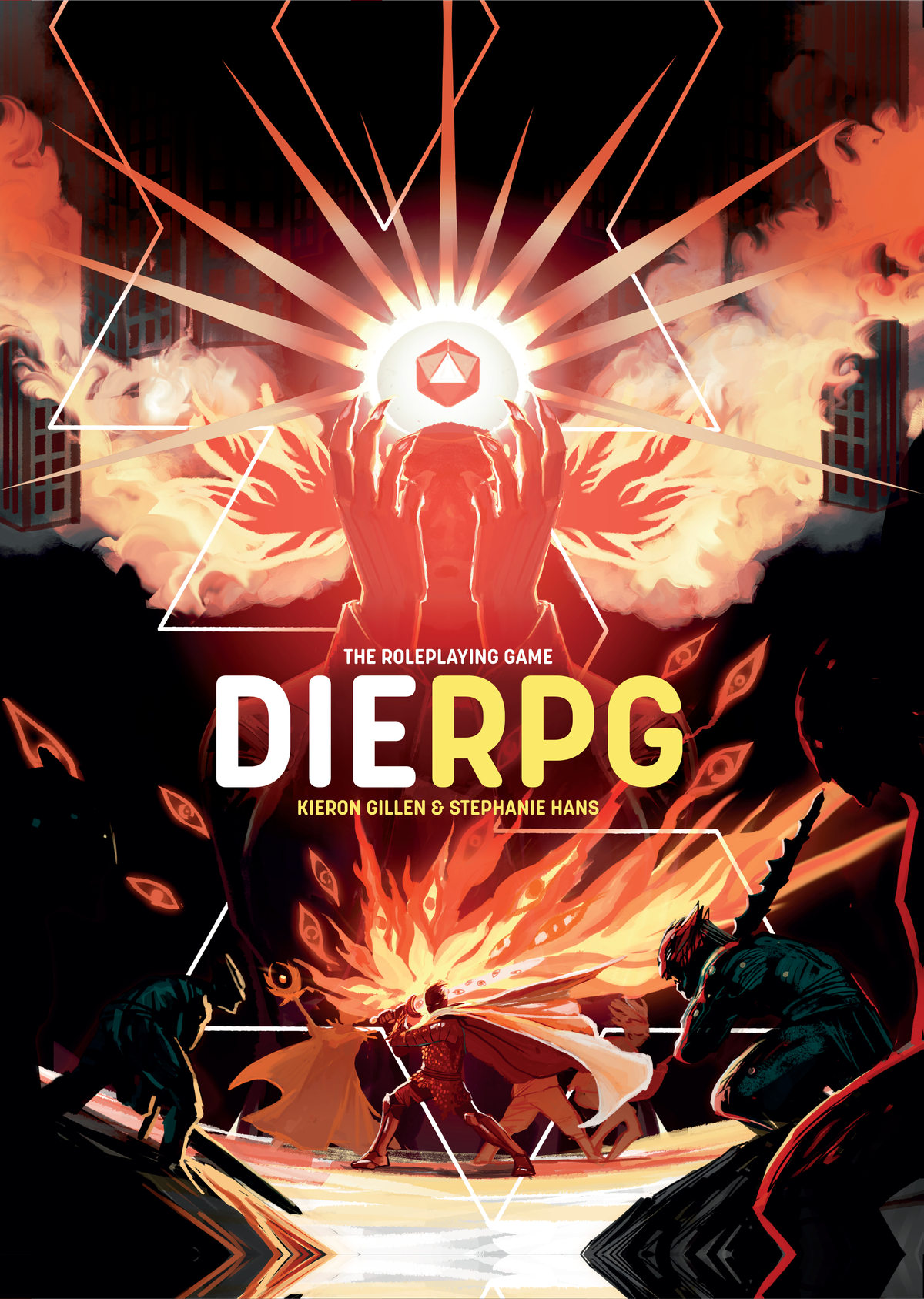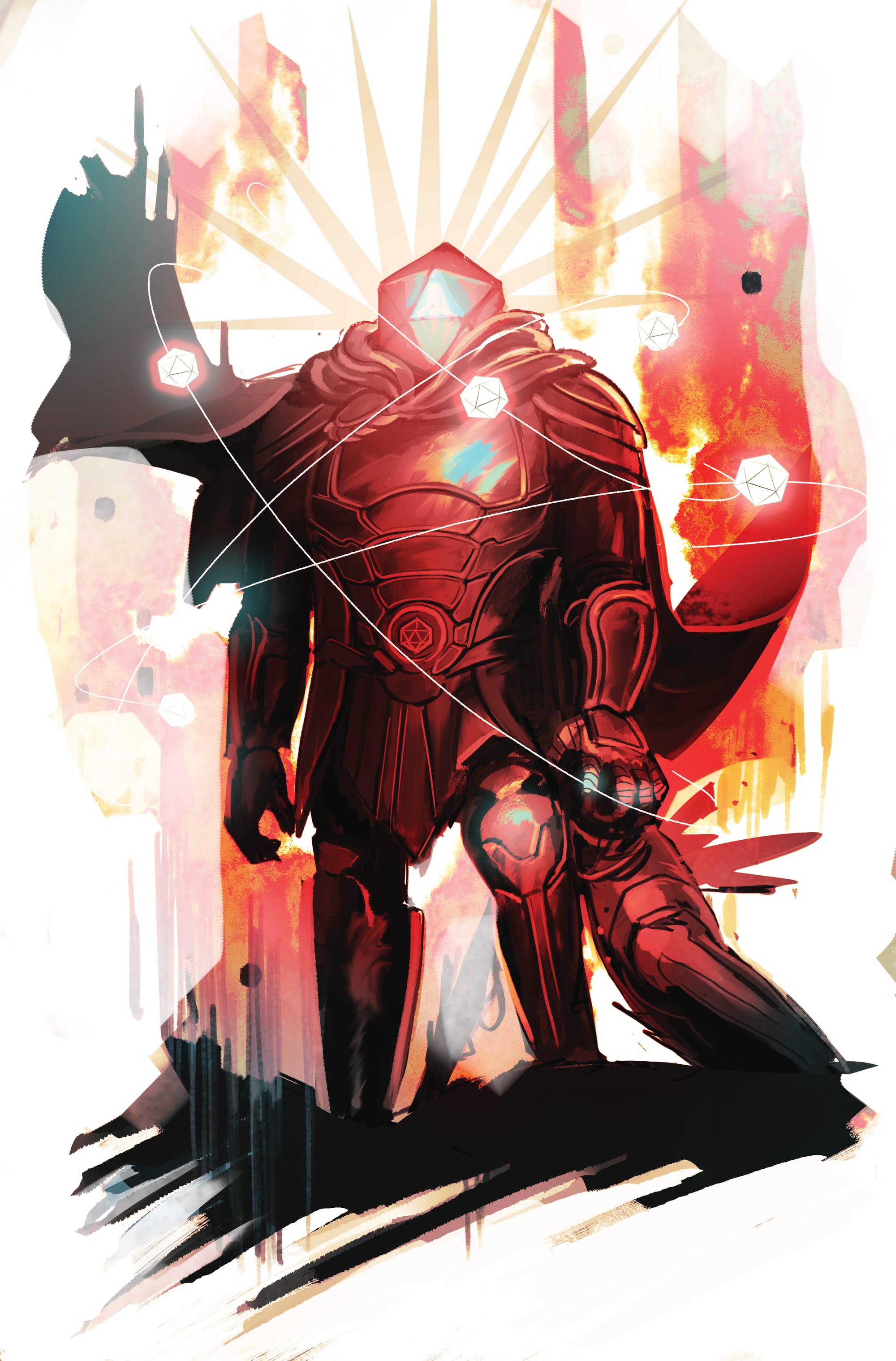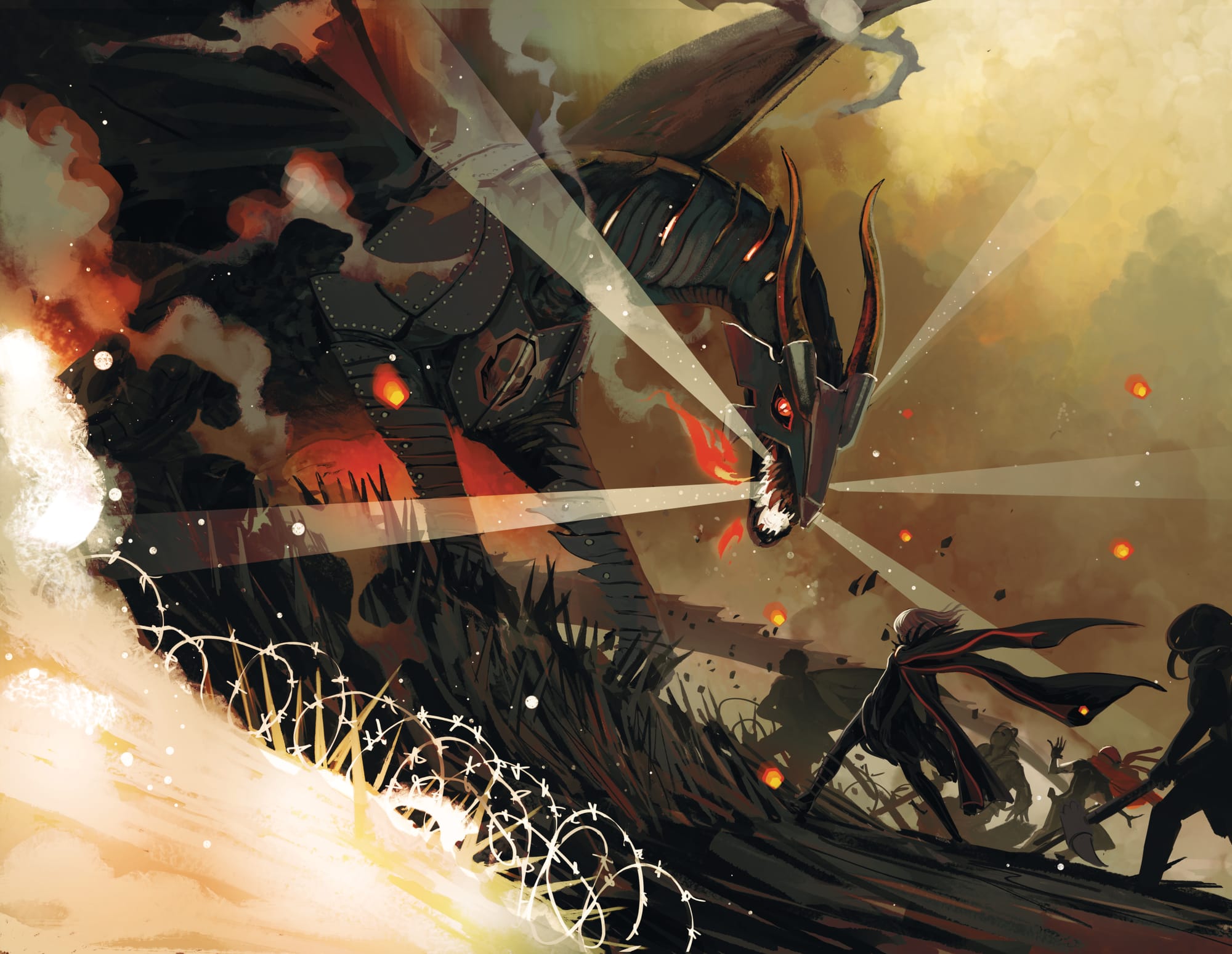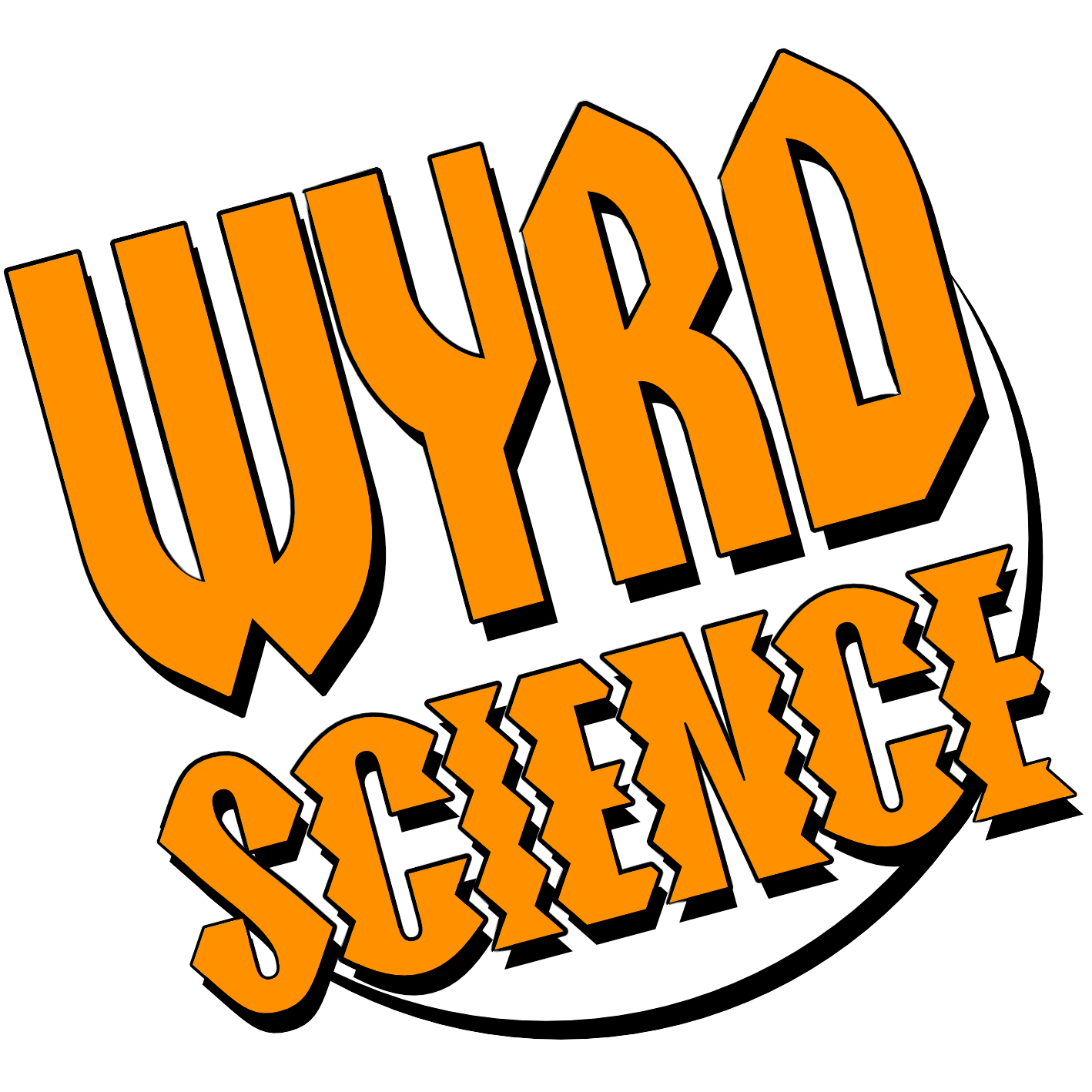
For as long as they’ve been published roleplaying games have asked, and tried to answer the question, “What is a roleplaying game?” 50 years on the answer remains as elusive as ever. I suspect there might have been a brief window of around five minutes back in 1969 when a relatively decent answer was possible but ever since it’s been open to endless, wild interpretation.
Flick through the following few pages and you’ll find games that could have, for all intents and purposes, been released in the mid 1970s and not raised an eyebrow. These sit against games where GMs and dice are optional, where the focus is on disgusting bloody violence or where bloodshed of any kind is verboten. We have games where the aim is to travel across strange lands and ones where creating a land at the table is the goal, solo games, journalling games, games that you play to win and games where you can’t. Frankly, it’s a mess, a wonderful one to be sure, but a mess nonetheless.
Still, if one person -or game- might have a half decent chance of resolving that question once and for all it would be Kieron Gillen and DIE - The Roleplaying Game. DIE might be Gillen’s debut game (leaving aside the small matter of Come Dice With Me, a free to download game based on the wonderfully anarchic Channel 4 dinner party show) but it feels like he’s been building up to this for most of his life.
As a journalist, and co-founder of the seminal video games site Rock Paper Shotgun, Gillen is more responsible than many for championing a new kind of games writing. One that asked what playing a game actually means to you, what the experience of playing it, of briefly inhabiting its world on its terms feels like rather than fussing over how many frames per second or dental polygons its developers crammed into it.
Not only that but his fiction, both work-for-hire gigs -especially his run on Journey Into Mystery for Marvel- and his own projects like Once & Future trade in the power of stories, the power stories possess to transform both ourselves and the world around us. If one of the better, if inevitably partial, definitions of a roleplaying game is that of a story building engine then surely he’s well placed to define the medium once and for all.
Finally, and most relevant here, alongside artist Stephanie Hans he recently gave us DIE, a comic about a group of sadsack adults who as teenagers were transported into a fantasy game world and now, thanks to the machinations of their old GM, are back, trapped in a world that seems determined to give them everything they want, or just as happily see them die trying.
So if the answer to our question is anywhere there’s a pretty good chance it’ll be here. As it happens “What Is An RPG?” does rear its head around 2 pages into DIE’s near 400 page rule-book and Gillen pretty much just says go watch Critical Role. Which is certainly a choice, but then that’s because DIE is a lot less interested in WHAT a roleplaying game is, than in WHY we play them. What is it about these games of the imagination that holds us under their spell and can pull us back in years later, what is it that we get out of these experiences and importantly how can they change us?
But this is supposed to be a review of some kind so first of all let’s try and at least answer what this one RPG in particular is.
DIE - The Roleplaying Game is the game of the comic, sort of. Really it’s as much that as the reverse is true. Both were conceived at the same time, developed in tandem and each fed into the other. The core premise though remains the same, beyond our world lies Die, a twenty sided, sentient planet; an amoral alien god that contains within it an infinitude of other twenty sided worlds, worlds of fantasy, power, imagination, wonder and horror.
Oh yes, we should probably mention that Die is also a very hungry god.

To sate its hunger it must feed off those who make their way, willingly or not, to one of the many sub-universes within it, realities created from and moulded by the imaginations and lives of gamers. Gamers who have somehow come into possession of a very special set of dice and who now find themselves pulled into one of Die’s worlds and gifted with wonderful, terrible powers, made into both heroes and hostages. See, the thing is your group can leave Die at any time, just all of you, including whoever brought you there, must want to. All of you left alive that is. Think the Dungeons & Dragons cartoon as directed by David Lynch or Wes Craven’s Jumanji and you should get the idea, it’s not Dragonlance, put it that way.
But in many ways DIE is also a wolf in sheep’s clothing. At least at first you’ll, probably, find yourself in some kind of fairly recognisable fantasy world, characters have six very familiar stats, there are classes -of a sort- that all bear some relation to those from The World’s Most Popular Roleplaying Game. Whilst things start to deviate at this point the basic rules for resolving actions -dice pools built from your stats- should still be familiar enough to anyone who has played more than one game. It’s not exactly rules-lite but close enough that you should have a grip on things by the end of your first session.
But what a first session that is, as right from the start the game begins to show its teeth. And oh what beautifully weird teeth they are. There’s the part where the players create Personas, the normal day-to-day versions of you that exist in the “real world” of the game and which you start the session off playing in a kind of freeform mini-Nordic LARP.
These personas are distinct from the characters, or Paragons, you become when a magic ritual is, literally, enacted at the table and you find yourself transported to Die. The Paragons themselves are, as we said, recognisable in a way. Five are deconstructed, house of mirror versions of familiar fantasy game classes. There’s the Dictator for example, a kind of nightmare bard, able to break minds at will and strip agency from NPCs and players alike with the slip of a tongue, or the Fool, a supernaturally lucky Leeroy Jenkins type, a tank with all the power as long as they accept none of the responsibility.
Each Paragon is tied to a particular polyhedral die and each has their own almost game breaking abilities. Some even get their own Plutchik emotion wheels to play with. There’s a lot going on under the hood.
Oh and the sixth Paragon, that’s The Master and they’re reserved for the GM. You see the GM is a character in DIE too and almost certainly the antagonist who, for whatever reason, got the gang back together, dragged them kicking and screaming into Die and now stands between them and home. See, we always knew that red robed weirdo was up to no good.
In another callback to the Dungeons & Dragons cartoon it’s also The Master who chooses which player gets which Paragon, and furthermore gets to treat the rules as more like -let’s say- guidelines, able to cast any spell they’ve thought up or even just outright break the rules should they need to, though the latter is not entirely without risk.
Whilst both DIE and Die contain an endless number of possible worlds you’ll almost certainly start by playing Reunited. This is the scenario that cleaves closest to the comic with its teenage gamers, brought back together years later by their GM for one last game.

At the start players take turns to flesh out their Personas, not by rolling stats or choosing equipment but by exploring who they are and how has life treated them in the intervening years. The scenario provides questions to ask each other and together you’ll build up a sense of what life was like at school, what your games were like, what it is that they are running from or to and what Die might have to offer them that the real world can’t. All information for the GM as Master to use as both the bricks to build a world from and the bullets -allegorical, emotional or literal- the players will soon be dodging.
Its a strong yet still remarkably easy to grasp concept, and one that if you want it to can easily absorb your own gaming and personal histories to powerful effect. All in all Reunited is probably the platonic ideal of a DIE scenario and is designed to play out over 2 or 3 emotionally bruising sessions.
Indeed Reunited is such a strong idea that it’s easy to overlook how flexible DIE’s core concept can be, which I suspect is why the book includes five other scenarios tucked at the back rather than bundling them in with a future supplement. These scenarios range from a group of bitter creatives coming back together at a comic con to a video game development team who, behind schedule and running out of money, get tricked into taking part in the team building exercise from hell.
These scenarios range in tone from black comedy to high fantasy and horror, often within each one. Whilst not quite as strong as Reunited they do provide plenty of inspiration, and demonstrate how you don’t need to tie scenarios just around RPG groups getting back together and can base them on many other experiences.
My mind immediately, and horrifically, flashed back to an old therapist who once invited me to a retreat where everyone present would take turns to “be” each other’s parents. Truly a harrowing DIE scenario if ever I saw one.
If you were to lean into the more emotional side of the game it could be hard to sustain that kind of intensity over a longer campaign. For those with the mental fortitude though the possibility is there to do so, really explore the 20 different regions of your Die, and dig into how they relate to each other and your past lives, both the players’ and Personas’.
With all that in mind it is worth saying that DIE features one of the better sections of safety tools I’ve read. It runs through all of the most well know tools, such as the X-Card and Lines and Veils, explains in plain terms concepts like Bleed and offers plenty of useful advice.
Indeed the book is full of great tips for GMs. Gillen’s an incredibly entertaining writer, one steeped in games history, and the book is full of asides, commentary and ideas about the nature of RPGs. Combine that with Stephanie Hans wonderful art, of which there’s a lot, and DIE is just a great book for anyone with an interest in RPGs to pul off the shelf and read through.
So, after all that does DIE answer why we play games? Not directly, the reasons - escapism, fun, curiosity, exploration of the self, catharsis, all of the above- will be as diverse and personal to you as Die’s many worlds are. It does though answer what this RPG is, and that is one of the most interesting and inventive out there today.
Writing: Kieron Gillen
Art: Stephanie Hans
Published by Rowan Rook & Decard
This feature originally appeared in Wyrd Science Vol.1, Issue 5 (Dec '23)

